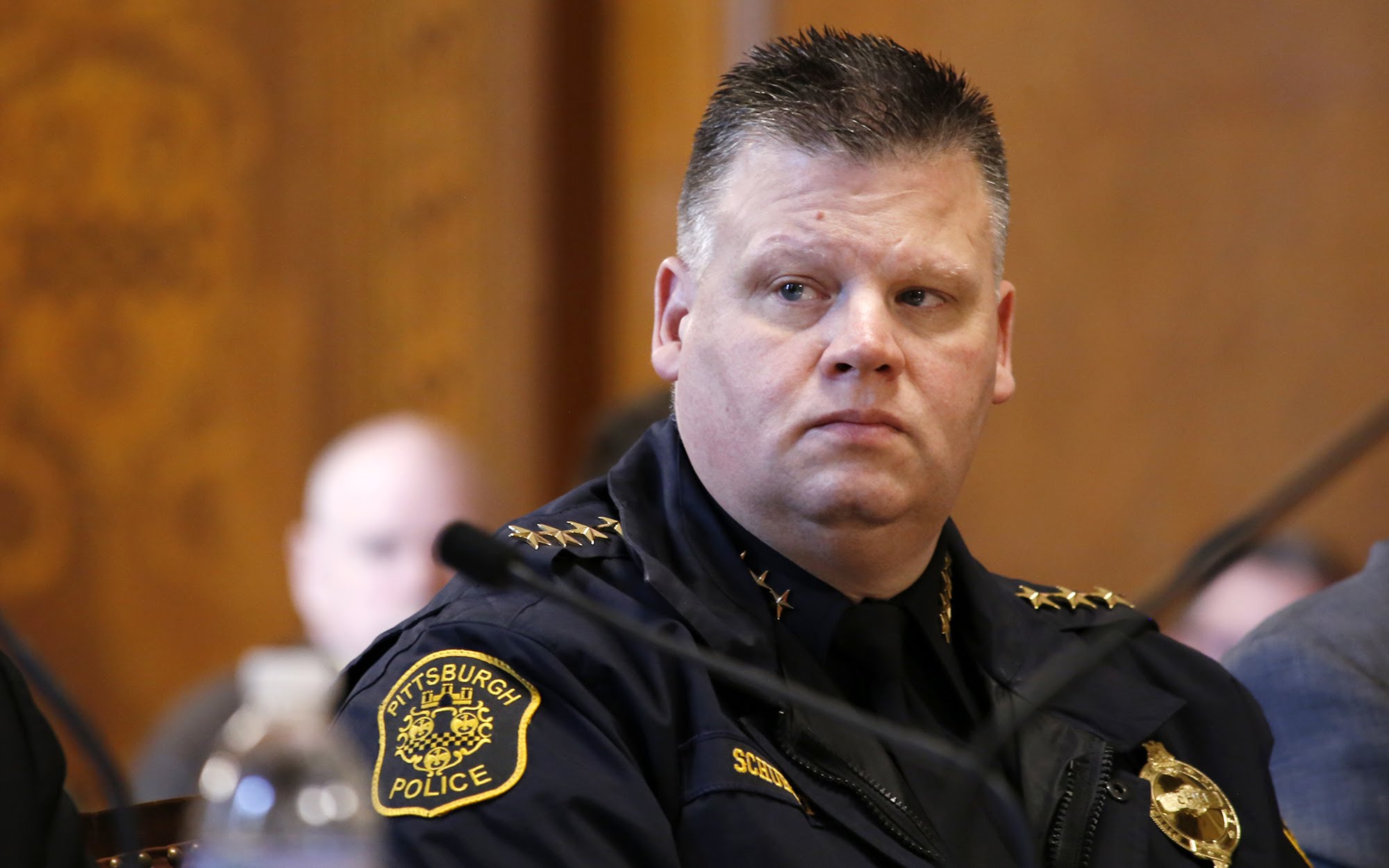


We must confront gun violence directly.
Essay by Nick CotterMass shootings deserve public attention, but if efforts to reduce gun deaths don’t focus on shootings in neighborhoods hurt by segregation and disinvestment, solutions will be ignoring Black lives.
Knowing that urban gun violence causes far more deaths than mass shootings, how do we make communities safer and improve the chances for young people to enjoy positive and prosperous futures?
To make an impact, policymakers, community leaders and law enforcement must urgently and directly address violence itself, not just its root causes of concentrated poverty, disadvantage and segregation.
The results of impact study meta analyses are generally clear: The most effective urban gun violence reduction programs address violence directly and require collaborative efforts between law enforcement, community groups and social service agencies. Pure enforcement strategies aren’t very effective, but prevention strategies tend to work best with support from law enforcement.
As detailed by Harvard criminal justice scholar Thomas Abt in “Bleeding Out,” policing that is focused, balanced and fair must replace policing that targets entire communities, focuses only on punitive efforts and lacks transparency.
These aggressive policing practices have eroded community trust in the police, and distrust in police can hurt neighborhood safety. In fact, studies show that police violence is linked to spikes in urban gun violence; as 911 calls declined, homicides rose significantly.
As part of the Pittsburgh Neighborhood Project, I interviewed Dana, a Knoxville resident, who explained her view that police officers are not individuals who offer her protection. She told me that she feels harassed by the police just for walking home from work and recounted the death of Jonny Gammage at the hands of Brentwood police back in the 1990s.
Across the United States and in Pittsburgh, Black communities stand at a frustrating crossroads. The same law enforcement officers the community needs to deter urban violence, and ultimately save Black lives, could also be the same officers who have caused harm through aggressive policing. In the United States, Black men are simultaneously the most likely to be victims of urban gun violence and the most likely to be killed by the police.
As Princeton sociologist Patrick Sharkey notes in his book “Uneasy Peace,” law enforcement practices like zero-tolerance policing, stop and frisk and unlawful harassment of Black residents have created insurmountable costs in poor communities of color across the United States, as has the rapid expansion of mass incarceration.
At the same time, Sharkey makes clear that the nationwide reduction in violent crime is one of the most important public health breakthroughs in the past several decades. According to Sharkey, the benefits of homicide reduction for Black men is equivalent to eradicating obesity for all Black men. Findings estimate that tens of thousands of Black lives have been saved and the decline in homicides explains 17% of the reduction in the racial gap in life expectancy between white and Black males. Sharkey also shows that academic performance has improved the most in those disadvantaged communities that have become the safest.
Sharkey presents a wealth of research that attributes the great crime decline from 1990 to 2014 to a dramatic change in our urban public spaces. Among the factors were increased police presence, new police interventions and capabilities, public surveillance, private security firms, mass incarceration and the proliferation of community nonprofits; all played a role in taking back public spaces from the gun violence that plagued them.
Sharkey placed particular emphasis on the role of anti-violence organizations and community building organizations in decreasing violence. But he also makes clear that law enforcement played a pivotal role.
As a white man, I recognize the disconnect of writing about issues that disproportionately impact low-income Black communities. To inform my views and challenge potential biases about the subject, I spoke to Rick Bigelow and Richard Garland, both of whom are prominently involved in community-driven violence reduction efforts in Pittsburgh.
Bigelow works with Voices Against Violence and SteelSmiling and focuses on combating violence in the South Hilltop; he grew up in Beltzhoover and describes himself as a peacemaker and mentor in his community. Garland is an assistant professor of Behavioral and Community Health Sciences (BCHS) at the University of Pittsburgh. He is the director of BCHS’s Health Equity’s Violence Prevention Project and has been a respected leader in Pittsburgh’s violence reduction efforts since the early 2000s. He is currently involved with a hospital-based crime and violence reduction intervention. Though Bigelow and Garland shared different viewpoints on successful strategies and the involvement of law enforcement, key themes emerged from our conversations.

First, without two-way communication and trust between the community and the police, violence reduction efforts won’t reach their full potential. Relationships and trust are at the heart of effective violence reduction strategies and only time will tell if Pittsburgh is actually serious about repairing trust between police and the community.
Second, both men shared skepticism about the role of police as part of the strategy. Garland said that it’s vital for police and community-driven violence reduction efforts to work together. But he was unsure whether the police would ever fully cooperate. Bigelow is skeptical about police involvement but said he is open to engagement if police make a considerable, meaningful and persistent effort to engage with neighborhood residents.
I asked the men what actions the police must take to repair trust between officers and the Black community. They said police need to first acknowledge their history of unlawful, and at times brutal, treatment of the Black community in Pittsburgh and meaningfully apologize for the actions of those officers at fault.
Both also stressed that police officers need to actively engage with the communities they serve beyond patrols and making arrests. Officers have a responsibility to get to know those in the neighborhood and support, and show up to, community events. Bigelow also believes officers should be mandated to live in the communities they patrol, which is no longer an option given a 2017 Pennsylvania Supreme Court decision. The Pennsylvania Supreme Court ruled that Pittsburgh police officers could live outside city limits.
The City of Pittsburgh is already moving in the right direction with violence reduction and prevention and in repairing trust, but there’s a long way to go. The Pittsburgh Bureau of Police was selected as one of the police departments across six pilot cities through the National Initiative for Building Community Trust and Justice in 2015, which focuses on implicit bias training, racial reconciliation and procedural justice. In 2017, Pittsburgh also started a community policing pilot program in 18 neighborhoods.
While these initiatives are a start, the city must also consider and improve upon other best practices that effectively reduce police brutality and repair community trust.

While well-studied gun control measures like red flag laws, domestic abuser restrictions and gun licensing requirements for handguns (or permit to purchase laws) have proven to have varying degrees of impact on reducing gun violence related to suicide and domestic violence (and handgun licensing in Connecticut is also linked to a significant decline in firearm related homicides), the majority of handguns used in urban violence are obtained illegally, and researchers found that most gun violence in Pittsburgh was carried out with an illegally owned gun.
But focused deterrence has been shown to be incredibly effective at reducing urban gun violence.
Focused deterrence is surgical in nature, driven by law enforcement, community groups and social service agencies. The strategy focuses only on the few individuals and groups involved in violent gun crime, not entire communities. Focused deterrence connects individuals at highest risk of violence with social services and offers would-be offenders a way out through call-ins and home visits, while police officers explain the consequences of continued violence and enforce legal punishment only if the violent crime doesn’t stop.
When implemented correctly, meta analyses of focused deterrence programs show that it leads to significant declines in violent gun-related crime. In fact, these programs tend to have the largest impact of any urban violence reduction strategy.
As of 2016, Pittsburgh fully adopted a new focused deterrence program dubbed the Group Violence Intervention unit [GVI]. A previous focused deterrence intervention was started under Mayor Luke Ravenstahl but was ultimately ineffective because Pittsburgh police reportedly refused to cooperate with the criminologist who developed the Operation Ceasefire group violence intervention program back in the 1990s.
City officials have cheered GVI for reducing violence. But the program must be rigorously studied to determine whether it is responsible for the decline in violence and to be sure that it has not simply caused violence to move to poor communities outside of the City of Pittsburgh. Unlike its predecessor, GVI has police cooperation, federal support and is more closely following a research-driven model as outlined by experts. Garland and Bigelow both suggested that GVI still has a ways to go to be implemented in a way that aligns with the research model, such as putting trust in community-driven efforts and focusing on individuals rather than whole communities.
Community-driven violence interruption and prevention strategies are a proven method to reduce gun violence in cities like New York, Baltimore and Chicago, although results can be mixed. Staff and volunteers often have a history of gang activity or gun violence themselves and can act as a respected mediator between rival group members; community and relational trust is key. Workers who run these programs are on call and have to be able to intervene anywhere at anytime, whether alerted of potential violence via social media or by a trusted community member.
Pittsburgh was previously home to a program called One Vision One Life, which was founded by Garland in 2004. However, a RAND study found that the program had no significant effect on homicide reduction in the neighborhood areas studied. It was actually associated with a significant increase in aggravated assault and gun assaults in those areas and nearby. Researchers suggest that the program’s ineffectiveness could have been due to study design limitations or by unfocused program implementation.
While One Vision One Life was well-known for its outreach, four-week basketball camp on the North Side and community vigils following gun violence, RAND’s researchers found that the program did not target individuals with the highest risk of committing violence, nor did it directly address gang activity. These aspects are crucial for such a program to work.
In 2017, the Allegheny County Health Department started deploying trauma and street outreach teams through grants awarded to FOCUS Pittsburgh and the University of Pittsburgh; the goal is to both treat the victims of gun violence and prevent the spread of gun violence in sections of Allegheny County. Trauma teams provide mental health services to those impacted by a shooting both inside and outside of the City of Pittsburgh, while street outreach workers function in sections of the county outside of the city. Led by Garland, street outreach teams focus on addressing retaliatory feelings between victims, and their friends, and the perpetrators who victimized them. Workers also monitor social media for potential disputes, as well as mediate conflicts before they turn violent.
Additionally, Abt found that cognitive behavioral therapy [CBT] is an incredibly effective strategy for those at highest risk of committing violence; those at highest risk have often been exposed to traumatic experiences and are in need of intervention. CBT is an effective method to alter the trauma-induced thoughts that can lead to impulsive and potentially violent behavior. And it should be noted that police officers are also significantly exposed to trauma by virtue of their work; officers are more likely to commit suicide, abuse substances and suffer depression. Gun violence impacts all of those who confront it.
While the most effective urban gun violence reduction strategies address violence directly, stakeholders must not forget about the root causes that allowed urban gun violence to take hold in the first place.
As Sharkey concludes in “Uneasy Peace,” disadvantaged neighborhoods must be the recipients of durable investments that focus on an effective workforce, after school and education programs in addition to investments and mixed-income strategies that deconcentrate poverty, as well as funding for effective community-driven anti-violence groups.
Using longitudinal data, Sharkey found that every 10 additional organizations focused on reducing violence or building stronger communities led to a 9% reduction in violent crime for cities with at least 100,000 residents. Place-based investment strategies like Neighborhood Choice may also play a role, although these programs must be studied to assess their benefit. Neighborhood Choice is a federally funded program that aims to equitably revitalize disadvantaged communities through mixed-income housing development, community-driven investments that improve the physical space of the neighborhood and by connecting residents with workforce, health and education services.
Violence reduction and investment strategies should not be seen as either-ors, but instead as both-ands. One is not a replacement for the other, and the most effective examples of urban gun violence reduction are in those cities like Boston and New York City where law enforcement and community groups have learned to effectively implement a combination of focused deterrence, violence interruption and CBT — all of which focus on the small number of young men most at risk of involvement in gun violence.
Nick Cotter is a researcher with Allegheny County and the creator of the Pittsburgh Neighborhood Project. He can be reached at pittsburghneighborhoodproject@gmail.com. The views expressed in this piece are those of the author alone. This piece does not reflect official views of the Allegheny County Department of Human Services. You can follow the Pittsburgh Neighborhood Project on Twitter @ThePittsburghNP.
This story was fact-checked by Juliette Rihl.
This project has been made possible with the generous support of The Grable Foundation.